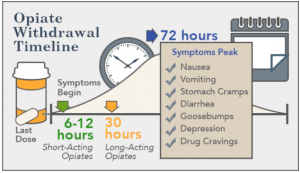Tramadol Withdrawal and Opioid Detox

Because the effects of Tramadol and similar opioid medications are so substantial on the brain and the body’s central nervous system, those who have used the drug for extended periods of time or have abused Tramadol, might find going through the Tramadol withdrawal and detox process can be difficult, but not impossible if they are assisted by medical professionals.
What is Tramadol and how Does it Work?
Also known as Ultram, Ryzolt and ConZip, Tramadol is an opioid based medication that works to relieve pain in moderate to severe cases and in some medical prognosis – those dealing with chronic pain. However, because Tramadol does carry a high risk to be an abused substance with habit-forming tendencies, medical professionals prescribe this opioid cautiously.
Tramadol is part of the analgesics opioid family and works by relieving pain in the body’s central nervous system. The opioids connect to brain receptors that inhibit the pain felt in the body. When used for extended periods of time (like with the extended release form of the drug) it can be physically and mentally habit forming for the user.
Tramadol Withdrawal Symptoms:
Withdrawal symptoms are common when going off a drug like Tramadol, especially if the user has been taking the drug for an extended period of time, or has been abusing the drug in high doses and frequency. Some withdrawal symptoms are normal and common, but others can be severe and should be overseen by a medical professional in case of risk of life.
Common Tramadol withdrawal symptoms include:
- Nausea/vomiting
- Diarrhea
- Dilated pupils
- Inability to concentrate
- Agitation
- Loss of appetite
- Confusion
However there are atypical withdrawal symptoms that can arise after a patient ceases to take Tramadol including in some rare cases: psychosis. In some cases patients have reported having visions, hallucinations and psychotic episodes resulting in intensive therapy and hospitalization.
These cases were often associated with patients who took part in other forms of opioid addiction and abuse earlier on, sometimes years before, and had switched to Tramadol as a “safer” substitute, according to medical journals.
To ease Tramadol withdrawal symptoms a patient might be given medical direction to taper and wean off the treatments, especially if they’ve been prescribed the extended release style of the medication, which is used to treat chronic pain.
Sometimes an individual, especially one who might be also abusing Tramadol and other opioids or illegal substances, may want to consider seeking help for their addiction through a reputable rehabilitation or drug treatment center.
Tramadol Abuse:
As mentioned above, Tramadol can become physically and mentally habit forming for the user. Those who use Tramadol for an extended period of time are more likely to become addicted to the drug and experience Tramadol withdrawal symptoms when they stop using it. Those who may abuse the drug (taken without a prescription or not as directed per the medical professional instruction) are also more likely to become addicted to Tramadol. It is important to take Tramadol exactly as directed by your healthcare professional. Do not take it longer than prescribed or more frequently than prescribed or in higher dosages. Abuse of this drug can result in drug addiction, but it also carries other side effects including respiratory issues and even overdose and death.
Tramadol Detox Process:
To avoid suffering through intensive withdrawal symptoms during the Tramadol detox process, the medical professional begins by first slowly reducing doses over time until the patient is no longer taking the drug at all. Those who might be illegally abusing the drug instead may find themselves struggling through the detox process attempting to cope with the Tramadol withdrawal symptoms. This is when sending the individual to an inpatient or outpatient treatment program and rehab might be a good option to consider to more effectively cope with the detox process in a supervised medical environment.
Detoxing from Tramadol as well as other opioids takes a varying amount of time depending on how long the user has taken the drug, how much and if they were using the drug in addition to other drugs. It also depends on a person’s past experience with drug addiction and withdrawal.
If you or someone you know is struggling with a Tramadol addiction, please contact a health care professional right away to receive the help needed to face the withdrawal and detox process under supervised medical care and rehabilitation to help kick the addiction once and for all and begin the road to recovery.
Sources: Sources: www.rxlist.com/
www.medpagetoday.com/
www.ncbi.nlm.nih.gov
americanaddictioncenters.org






